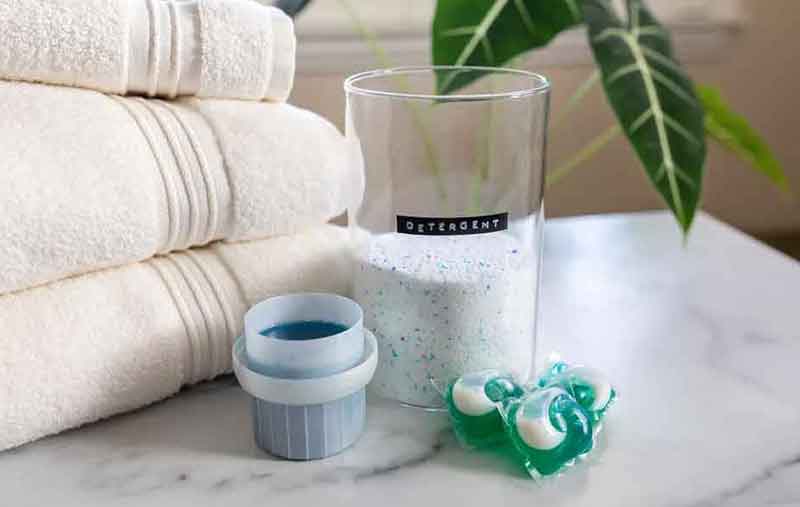The first soaps were manufactured in ancient times through a variety of methods, most commonly by boiling fats and ashes. Archeologists excavating sites in ancient Babylon have found evidence indicating that such soaps were used as far back as 2800 B.C. By the second century A.D., the Romans were regularly making soap, which they had probably begun to produce even earlier…..
Laundry Detergent

Background
The first soaps were manufactured in ancient times through a variety of methods, most commonly by boiling fats and ashes. Archeologists excavating sites in ancient Babylon have found evidence indicating that such soaps were used as far back as 2800 B.C. By the second century A.D., the Romans were regularly making soap, which they had probably begun to produce even earlier.
In Europe, the use of soap declined during the Middle Ages. However, by the fifteenth century, its use and manufacture had resumed, and an olive-oil based soap produced in Castile, Spain, was being sold in many parts of the known world. Castile soap, which is still available today, has retained its reputation as a high-quality product.
During the colonial period and the eighteenth century, Americans made their own soap at home, where most continued to produce it until soap manufacture shifted away from individual homes to become an industry during the 1930s. The first detergent, or artificial soap, was produced in Germany during World War I. In 1946, the first built detergent appeared, comprising a surfactant(a surface-acting agent or soap) and a builder (a chemical that enhances the performance of the surfactant as well as rendering the laundering process more effective in other ways). Pushed along by economic prosperity and the development of relatively inexpensive washing machines in the wake of World War II, detergent sales soared; by 1953, they had surpassed soap sales in the United States.
Raw Materials
Although people commonly refer to laundry detergent as “soap,” it is actually a synthetic combination that functions much like soap, with certain major improvements. Soap cleans because each soap molecule consists of a hydrocarbon chain and a carboxylic group (fatty acids) that perform two important functions.
The carboxylate end of the soap molecule is hydrophilic, meaning that it is attracted to water, while the hydrocarbon end of the molecule is both hydrophobic (repelled by water) and attracted to the oil and grease in the dirt. While the hydrophobic end of a soap molecule attaches itself to dirt, the hydrophilic end attaches itself to water. The dirt attached to the carboxylate end of the molecule is chemically dragged away from the clothes being cleaned and into the wash water. Properly agitating and rinsing the clothes furthers the cleansing process.
The major difficulty with using soap to clean laundry shows up when it is used in hard water—water that is rich in natural minerals such as calcium, magnesium, iron, and manganese. When these chemicals react with soap, they form an insoluble curd called a precipitate. Difficult to rinse out, the precipitate leaves visible deposits on clothing and makes the fabric feel stiff. Even water that is not especially hard will eventually produce precipitates over a period of time.
While the hydrocarbons used in soap generally come from plants or animals, those used in detergent can be derived from crude oil. Adding sulfuric acid to the processed hydrocarbon produces a molecule similar to the fatty acids in soap. The addition of an alkali to the mixture creates a surfactant molecule
In the blender method of making powder laundry detergent, the ingredients—surfactant, builders, antiredeposition agents, and perfumes—are simply blended together in a mixer, released onto a conveyor belt, and packaged accordingly. This method is favored by smaller companies. that will not bond with the minerals in hard water, thus avoiding the accumulation of precipitates.
